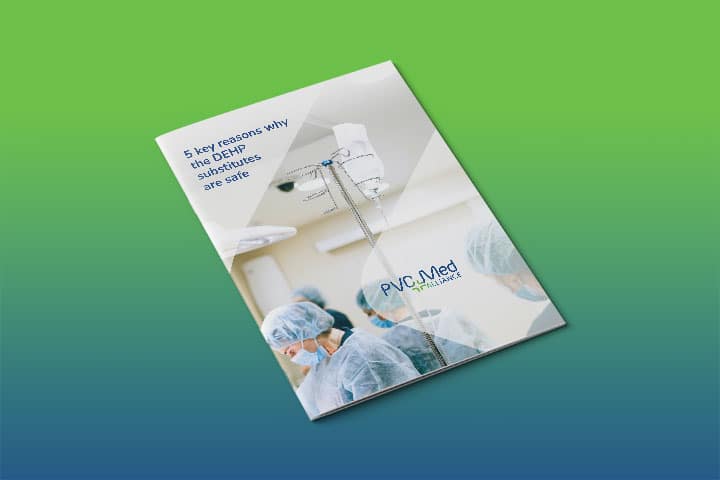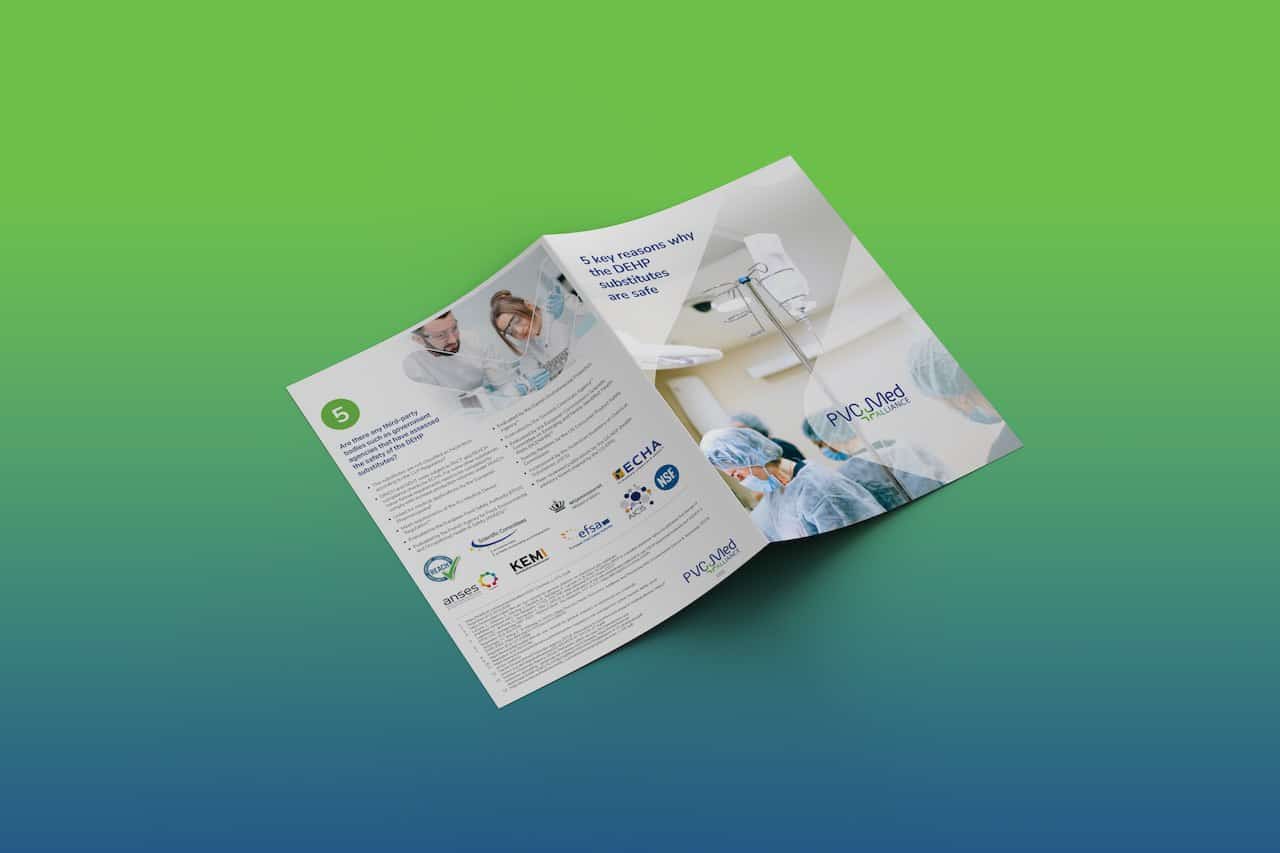PVC is the single most used plastic for disposable medical devices such as masks, tubing and bags. Most of the PVC-based medical devices are soft, which requires that a socalled plasticiser is added to the compound. For many years the plasticiser of choice was the phthalate DEHP. Based on its toxicological profile the substance has been under increasing scrutiny by regulatory and medical authorities.
Under the EU Medical Device Regulation, the continued use of DEHP in medical devices after 31 December 2027 for high-risk devices and 31 December 2028 for medium- and low-risk devices requires a justification according to the latest relevant scientific committee guidelines. Under the EU’s chemical regulation REACH, the use of DEHP in the remaining applications will have to be terminated by 14 December 2024, or in medical devices by 1 July 2030.
The plasticiser industry has invested more than €6 billion in developing safe alternatives. For medical applications, the European Pharmacopoeia lists since 2016 the following plasticisers as replacements for DEHP: DINCH, BTHC, TOTM (TETHM) and DEHT (DOTP/DEHTP). These plasticisers can replace DEHP in virtually all instances, also in blood bags. Discover the progress.
Yet some stakeholders are questioning the safety of the new plasticisers. Discover answers to frequently asked questions about the DEHP substitutes below:

Aren’t all plasticisers alike?
A main concern related to plasticisers is that they can migrate, leach, or evaporate from the products as they are not chemically bound to the PVC matrix. Medical treatment can lead to high exposure to DEHP. Though they can all make PVC soft, not all plasticisers are alike. The observed adverse effects of DEHP and other low molecular weight (LMW) phthalates are caused by their specific molecular structures. As the molecular structure of the DEHP substitutes are very different, they migrate far less and do not show the adverse effects like LMW phthalates.

What has the industry done to prove the safety of the DEHP substitutes before introducing them on the market?
The producers have thoroughly tested their new substances. Please note that the development of these alternative plasticisers started years ahead of REACH! Now, under the EU chemicals regulation REACH – which is seen as the strictest in the world – it is up to industry to prove that a substance is safe. REACH requires chemical manufacturers to register substances with the European Chemicals Agency if they are used on the market.
The REACH system ensures that for any plasticiser currently produced safe use can be demonstrated. Regarding medical devices, which are regulated specifically by the Medical Device Regulation, the safe use and benefit-risk analysis in the intended applications need to be provided by the medical device industry.
The data used for these safe use determinations for medical devices comprise acute toxicity, skin and eye irritation, sensitisation, repeat dose toxicity, genotoxicity, carcinogenicity, reproductive and developmental toxicity, and endocrine disruption. As all these chemicals are dual use materials, the whole environmental hazards are covered by the REACH information requirements.

We don’t know the long-term consequences of the DEHP substitutes. Shouldn’t we use the precautionary principle and avoid using the substances, in particular in medical devices that are used on newborns or other vulnerable humans?
The four plasticisers used in medical devices as listed in the European Pharmacopeia (DINCH, BTHC, TOTM and DEHT) have been used for more than 20 years. No adverse effects have been observed. In addition to the studies undertaken to satisfy the REACH information requirements, DINCH, BTHC and DOTP have been subject to repeat dose toxicity testing on the intravenous route – for a time period that is sufficient to do a safety assessment for medical applications.

Isn’t it better to replace PVC altogether to avoid plasticisers?
Plasticisers are among the world’s most researched substances. Some LMW phthalates have shown to exhibit adverse effects on health and environment, other plasticisers have not. The chemical industry has developed safe alternatives which are based on their comprehensive toxicological profiles safe for all the intended uses. These alternative plasticisers have substituted LMW phthalates nearly to 100% in Europe.
To avoid plasticisers, some are calling to phase out PVC with other materials that do not require plasticisers to be softened. However, just because a plastic material does not need plasticisers, it does not mean it is free from additives that may migrate into the body with possible adverse effects. Today, 10,000 substances are used to provide different properties to different plastics. According to a recent study, nearly 25% of these chemicals have been identified as substances of potential concern because they meet EU’s persistence, bioaccumulation and toxicity criteria. Thus, if PVC as such is merely replaced by other plastics, regretful substitution cannot be ruled out.

Are there any third-party bodies such as government agencies that have assessed the safety of the DEHP substitutes?
- The substitutes are not classified as hazardous according to the CLP Regulation
- DINCH and DEHT were subject to PACT and REACH compliance checks by ECHA. For some other substances minor formal requirements need to be completed to comply with increase production volumes under REACH
- Listed for medical applications by the European Pharmacopoeia
- Meet requirements of the EU Medical Device Regulation
- Evaluated by the European Food Safety Authority (EFSA)
- Evaluated by the French Agency for Food, Environmental and Occupational Health & Safety (ANSES)
- Evaluated by the Danish Environmental Protection Agency
- Evaluated by the Swedish Chemicals Agency
- Evaluated by the European Commission’s Scientific Committee on Emerging and Newly-Identified Health Risks (SCENIHR)
- Toxicity Reviews by the US Consumer Product Safety Commission
- Assessment by the Australian Inventory of Chemical Substances (AICS)
- Peer-reviewed publications by the US NSF (health advisory board chaired by the US EPA)




